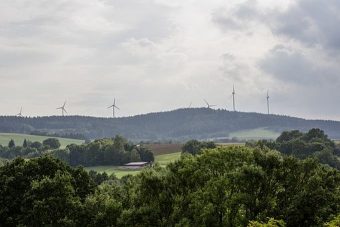
The governments of Scotland and California have signed a joint agreement committing the two administrations to share best practice on reducing greenhouse gas emissions and tackling climate change.
Scotland’s First Minister Nicola Sturgeon visited Governor of California Jerry Brown in Sacramento on Monday to discuss how the two administrations can work together to achieve the ambitions set out in their Under2 Memorandum of Understanding on global climate leadership.
Set up in May 2015, the Under2 Coalition brings together a diverse group of 167 sub-national governments committed to reducing their greenhouse gas emissions to between 80-95 per cent below 1990 levels, or limiting emissions to less than two metric tonnes per capita by 2050.
According to the Scottish Government, the two leaders also discussed the importance of offshore wind in tackling climate change and considered how the two administrations could share knowledge and best practice in developing the technology.
Sturgeon said the meeting “strengthened our relationship with the Government of California and I’m confident we can work together to achieve the targets set out by the Under2 MoU”.
“We have also offered to help the Under2 Coalition, representing over one billion people, to prepare for a major summit in 2018 which will bring together the public and private sectors, alongside NGOs, to build support and action aimed at persuading national governments to increase their efforts to tackle climate change, in what will be an important year for taking stock against progress of the Paris Agreement,” the Scottish First Minister said.
The agreement came as Scotland broke yet another renewable energy generation record during March.
According to WWF Scotland’s analysis of data provided by WeatherEnergy, wind power generation jumped by 81 per cent last month compared to the same period in 2016.
It means provided enough electricity in March – over 1.2GW – to power 136 per cent of Scottish households, or 3.3 million homes.
Scotland’s total electricity consumption for March – including homes, business and industry – was just under 2.1GW, meaning wind power generated the equivalent of 58 per cent of Scotland’s entire electricity needs for the month, WWF said.
Moreover, on two separate days – 17 and 19 March – wind turbines generated power output equivalent to more than Scotland’s total power needs for each day.
Overall the performance represents several new renewable power records for March, although Scotland has generated higher levels of wind output during other months of the year.
WWF Scotland’s director Lang Banks said the milestones were particularly impressive as this March was not as windy as it has been in some previous years, demonstrating the importance of continuing to increase renewables capacity by building more wind farms.
“As well as helping to power our homes and businesses, wind power supports thousands of jobs and continues to play an important role in Scotland’s efforts to address global climate change by avoiding millions of tonnes of carbon emissions every year,” he said. “It’s only with political backing for onshore wind from all of the parties that Scotland will be able to maximise the benefits to its economy, as we transition to a renewable future.”
Source: businessgreen.com



